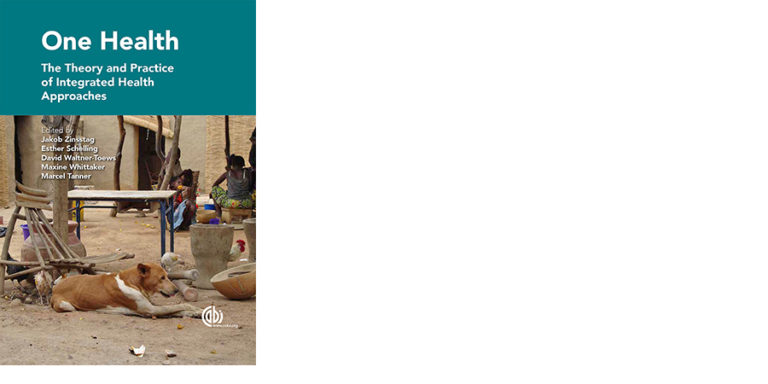How this course works
This course introduces you to the principles of One Health. It focuses especially on the added value that derives from a closer cooperation of human and animal health. In six weeks, you learn about the theoretical foundations of One Health, the principles of integrated approaches to health and how an added value can be assessed.
Your course team
Your lead educator, Jakob Zinsstag, will guide you through this course. It might be a good idea to follow him.
Course contributors and mentors
A lot of people contributed to this course. You shall meet the educators’ colleagues Karin Hediger and Constanze Pfeiffer as well as PhD students Mohammed Ibrahim Abdikadir and Daniela Rodriguez. They all were involved in producing the materials for this course – and we should not forget to mention Lisa Crump as well, who has edited them. Some of them will be active in certain weeks of this course as a mentor. The same is true for Andrea Kaiser-Grolimund, Stephanie Mauti, Kathrin Heitz-Tokpa and Pascale Vonäsch. You might also want to follow them to keep track of how this course evolves. Mentoring will take place from 28th September 2020 to 8th of November 2020.
You will explore the subject matter of One Health in six weeks. Every week focuses on one topic.
- In the first week you collect and discuss information about the theoretical foundations of One Health.
- In the following week you solve certain formulae, investigating quantitative One Health methods.
- The third week addresses One Health in practice and lets you familiarise yourself with selected case studies.
- In the fourth week you explore qualitative and mixed One Health methods.
- And you reflect on further case studies in the fifth week.
- In the last course week, finally, we take a look into what lies beyond One Health, discussing how this concept will evolve.
This is the course in a nutshell. Now let us explore in more detail what questions and issues will be addressed during those six weeks.
Week 1: theoretical foundations of One Health
In the first week, we address the following questions: How do we as humans relate to animals? What influences the human – animal relationship? How are human and veterinary medicine related? Why is there a separation between medicine for humans and animals? Does it make sense if human and veterinary medicine work more closely? Could there be benefit if doctors and veterinarians worked better together as One Health?
You will learn to think about the astonishingly irrational relationship of humans and animals, and see how cultural and religious backgrounds shape the human–animal relationship. This enables you to become self-reflexive and identify the distinctions of your relationship to animals when compared to people with another background. A clearer understanding of the human–animal relationship helps you to understand how human and veterinary medicine are organised, and you become aware of the shortfalls of segmented medical disciplines. The first week closes with the question, ‘Would it be beneficial, if doctors and veterinarians worked closer together and how could this be assessed?’.
Week 2: One Health quantitative methods
In the second week, the focus lies on practical learning: How can we identify and generate an added value between human and animal health? How can we conceive of a possible contact between humans and animals as an interface? What kind of animal-human interfaces exist? How can we develop methods to assess the animal-human interface? How can infectious diseases, which are transmitted between animals and humans, be assessed and economically analysed across different sectors?
At this stage, fundamental insights are introduced about the systemic way that human and animal health can better work together. You explore examples in order to understand how an interface that relates human and animal health can be established. You will be able to characterise the animal-human interface qualitatively and quantitatively and learn how to progress from biological understanding of the animal-human interaction to a framework of data collection. For quantitative assessments, you learn about the mathematical principles of animal-human infectious disease transmission and are introduced to fundamental principles of cross-sector human and animal health economics.
Week 3: One Health case studies I – One Health in practice
The quantitative methods are applied to questions like: What is the added value of a One Health approach to rabies control and how can it be assessed? Is it cheaper to provide human post exposure prophylaxis or to mass vaccinate dogs to control rabies in African cities? We also address whether companion animals are good for your health – and vice versa. The last example in this week addresses food in a One Health context and how food safety can be improved between producers, markets and consumers. You become competent in assessing rabies exposure and creating a cost-menu for the assessment of cross-sector economics of rabies. You learn about the trade-off between different control strategies as a key example of a One Health approach and see how companion animals may lead to positive (measurable) health effects as effective facilitators in selected therapies. Finally, you learn about the broader issues influencing health and safe, as well as fair, food.
Week 4: qualitative and mixed One Health methods
Quantitative One Health methods are extended to qualitative and mixed methods assessments. You will explore why we deal with socio-cultural aspects in One Health and how qualitative One Health aspects can be assessed. We identify qualitative animal-human interactions and show which disciplines to associate in a given One Health problem. We convey why we need to engage with communities, local authorities, policy makers and international organisations in a participatory, transdisciplinary process.
Week 5: One Health case studies II
You will explore case studies and practical methods to measure human and animal vaccination coverage. You will discover how health and demographic surveillance can be extended to humans and their livestock and how we can move towards integrated human and animal syndromic surveillance in real time.
Week 6: beyond One Health – ecosystem approaches to health
Conceptual thinking does not stop at One Health. You will investigate what other fields of One Health application are and why we should move beyond One Health towards ecosystem approaches to health. One Health has a strong interventionist orientation, which is demonstrated using the example of the science of rabies elimination.
This free online course provides learners with an overview. For a more comprehensive introduction, we recommend our textbook. Note that this further reading is optional. You find a direct link at the bottom of this page.
 One Health: The Theory and Practice of Integrated Health Approaches (2015) edited by J. Zinsstag, E. Schelling, D. Waltner‐Toews, M. Whittaker and M. Tanner
One Health: The Theory and Practice of Integrated Health Approaches (2015) edited by J. Zinsstag, E. Schelling, D. Waltner‐Toews, M. Whittaker and M. Tanner
© CAB International
Get extra benefits, upgrade your course
You can get extra benefits by upgrading this course, including:
Unlimited access to the course: go at your own pace with unlimited access to the course for as long as it exists on FutureLearn.
Access to tests: ensure you’ve mastered the material with access to tests on the course.
A Certificate of Achievement: to help you demonstrate your learning we’ll send you a Certificate of Achievement when you become eligible.
Share this
One Health: Connecting Humans, Animals and the Environment

One Health: Connecting Humans, Animals and the Environment


Reach your personal and professional goals
Unlock access to hundreds of expert online courses and degrees from top universities and educators to gain accredited qualifications and professional CV-building certificates.
Join over 18 million learners to launch, switch or build upon your career, all at your own pace, across a wide range of topic areas.
Register to receive updates
-
Create an account to receive our newsletter, course recommendations and promotions.
Register for free







